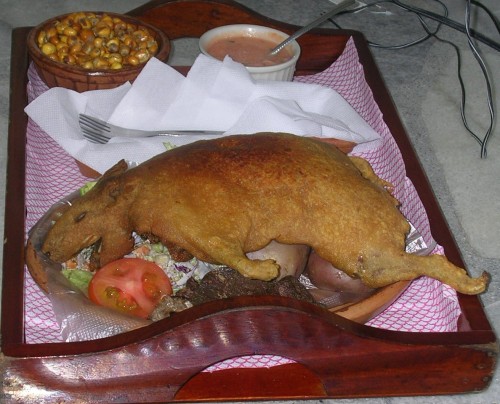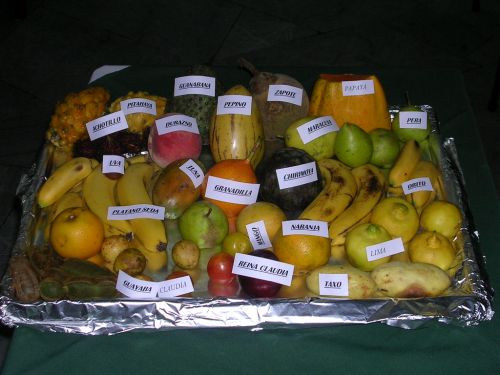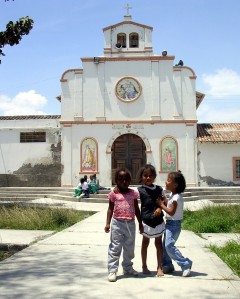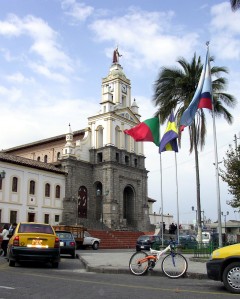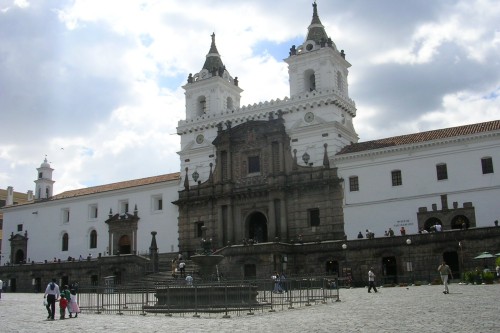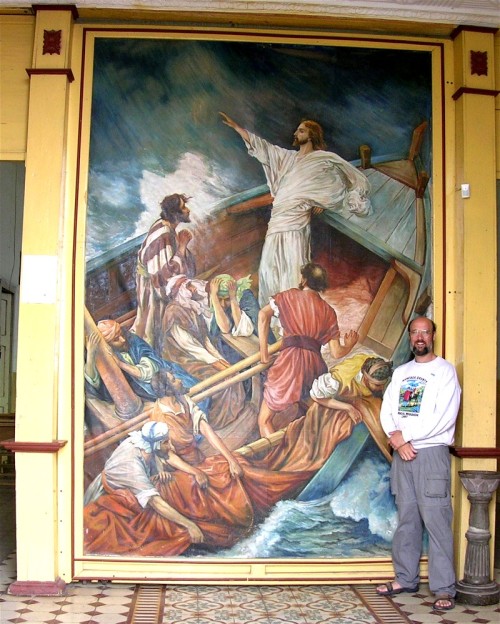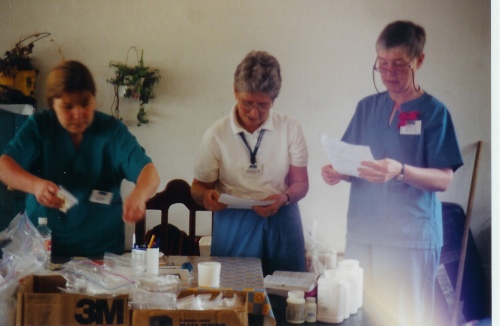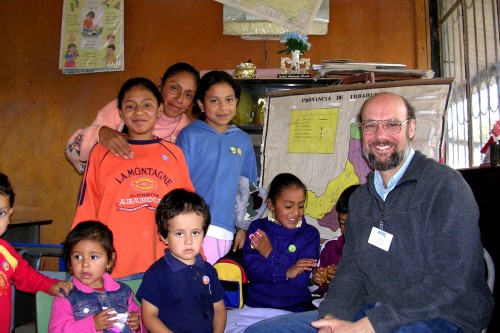By now (Sunday) we should have arrived in Quito. We’ll be in working in Guaranda, Ecuador for our two-week me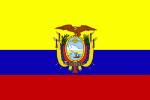 dical mission and plan to get on the bus this afternoon for a four-hour ride along the Andes to our destination.
dical mission and plan to get on the bus this afternoon for a four-hour ride along the Andes to our destination.
I have scheduled this blogpost in advance, also about ten others during the next two weeks. So stay tuned for messages and photos based on previous trips at least. I’ll be getting e-mails out to family members with up-to-date info, but I don’t expect to do much live-blogging.
They call Ecuador La Mitad del Mundo, the Middle of the World, because it’s right on the Equator. In fact, that’s what Ecuador means. Sun straight up at noon, and when it gets dark it gets dark fast because the sun sets straight down.
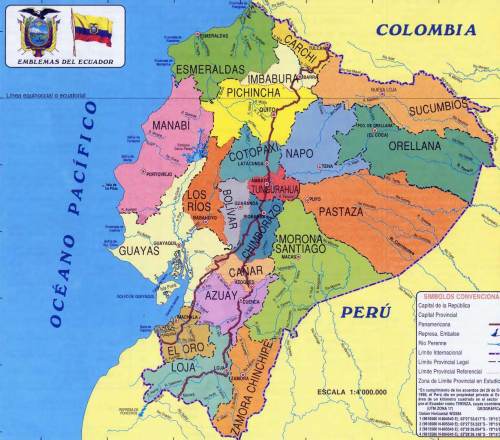
We'll be working in Guaranda, in Bolívar province just to the left of the center. Click on the map to enlarge it.
The official language is Spanish and not many speak English here. For the next two weeks that’s my job. I’m translating for Hancock County Medical Mission, an annual two-week tradition put together by medical and non-medical people from Maine. Our medical staff provides free or low-cost health care and medications.
Our surgery team will work out of the hospital in Guaranda each day, doing hernia repair, gall bladder removal, vein stripping, appendectomies, hysterectomies, and minor surgeries. Possibly a childbirth or two.
Ecuador has many hospitals, but they are underutilized. We make arrangements with one in an area of need and essentially take over the place. Fortunately for the Ecuadoran staff (administrators, nurses, cleaning ladies) we’re only there for two weeks because it’s pretty busy. Generally we have two operating rooms going full-time.
In the cities, even a smaller city like Guaranda, the culture will be more Spanish. We’ll be staying in a hotel there in order for the surgical team to be nearby the hospital. The Clinic team (family practice, checkups, aches/pains, infections, thumps/bumps, eyeglasses, etc) will go out by bus daily to smaller farming communities where there is more need. This makes for some great rides through spectacular mountains and valleys. We take trunks of medications with us and set up clinic usually in a school building, or an evangelical church building, or a gym or community center. The locals make us very welcome.
Lots of Indigenous people in Ecuador, descendants of the Incas  and other tribes. The Quichua language is spoken widely along the Andes mountains, from Columbia through Ecuador, Peru and into Bolivia to the south. The Quichua language (spelled Quechua elsewhere, and differing in dialect) is a beautiful, musical language with more consonants than Spanish, so there’s no doubt which language they’re speaking. Many Spanish words have been adopted, but it’s very different. In the higher elevations and among the rural poor the language is more common, and among the elderly, but younger Indigenous people speak Spanish too as a native language. As a translator, this is fascinating because during those times I also need a translator. Surprisingly, it becomes easier because often the very old are hard for me to understand in Spanish. So, if they need a Quichua-Spanish translator it’s usually a younger family member, and the younger ones speak great Spanish!
and other tribes. The Quichua language is spoken widely along the Andes mountains, from Columbia through Ecuador, Peru and into Bolivia to the south. The Quichua language (spelled Quechua elsewhere, and differing in dialect) is a beautiful, musical language with more consonants than Spanish, so there’s no doubt which language they’re speaking. Many Spanish words have been adopted, but it’s very different. In the higher elevations and among the rural poor the language is more common, and among the elderly, but younger Indigenous people speak Spanish too as a native language. As a translator, this is fascinating because during those times I also need a translator. Surprisingly, it becomes easier because often the very old are hard for me to understand in Spanish. So, if they need a Quichua-Spanish translator it’s usually a younger family member, and the younger ones speak great Spanish!
Incidentally, the Indigenous are about the friendliest people I have ever met. And their kids are suspiciously well-behaved as well as unbelieveably cute.
I have ever met. And their kids are suspiciously well-behaved as well as unbelieveably cute.
Our team numbers 24 this year. Most of us are from Maine, but several from Canada and southern US states. Doctors, nurses, PAs, anesthesia providers, surgery technologist, translators and general helpers. We have several young people including two high school students who earned a scholarship to come, improve their Spanish and translate for us.
We may be avoiding Carn aval this year; it’s not until March 8. Also known as Mardi Gras, it’s a time when kids in Latin American countries soak everyone they can find, with water balloons and home-made water cannons. It’s considered a triumph when they can soak a whole busload of gringos, the entire length of the bus, because the windows didn’t get closed fast enough. All in good fun, but it’s still wet.
aval this year; it’s not until March 8. Also known as Mardi Gras, it’s a time when kids in Latin American countries soak everyone they can find, with water balloons and home-made water cannons. It’s considered a triumph when they can soak a whole busload of gringos, the entire length of the bus, because the windows didn’t get closed fast enough. All in good fun, but it’s still wet.
More later. Thanks for checking in and keep praying for us.
Ted
Read Full Post »








